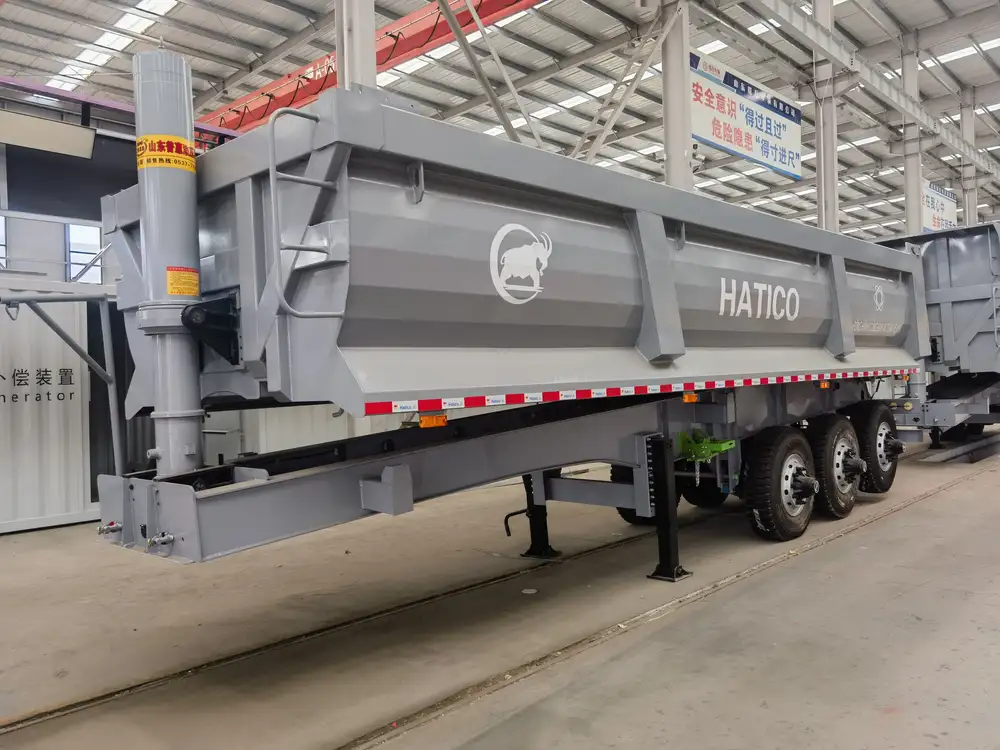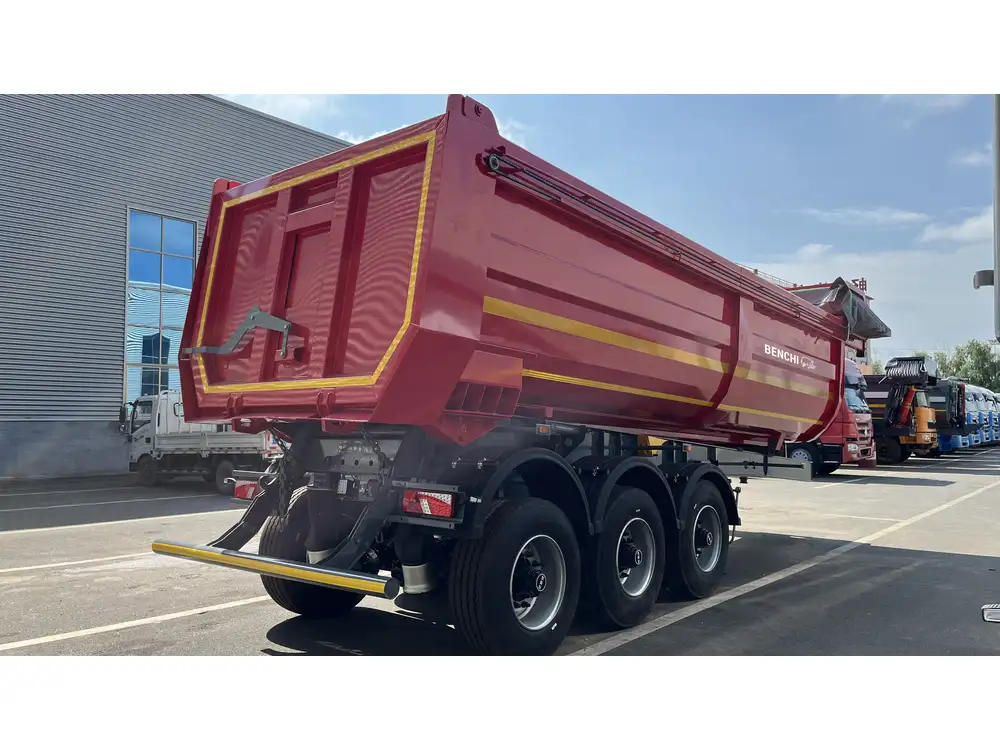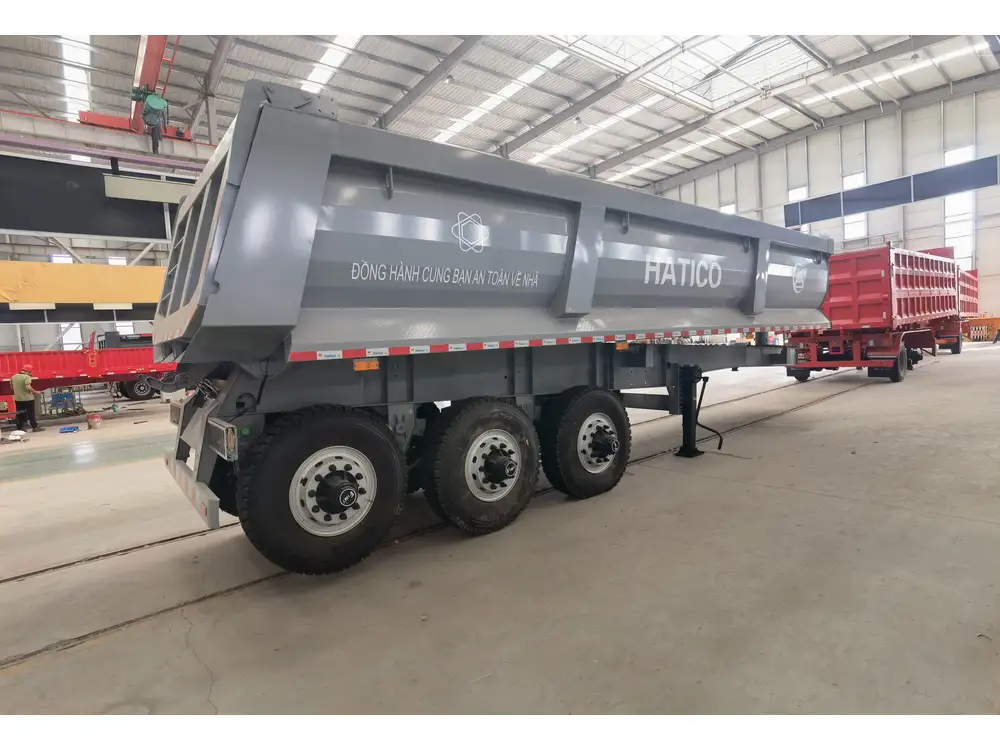When it comes to transporting materials for construction, landscaping, or any other heavy-duty task, dump trailers are invaluable. However, a crucial question arises: How fast can you pull a dump trailer? The speed at which you can safely tow a dump trailer involves numerous considerations—vehicle specifications, weight capacity, road conditions, and legal regulations. In this comprehensive guide, we dissect the factors that influence towing speed, providing insights and useful information to ensure your hauling experience is efficient, safe, and compliant.
Understanding Dump Trailers and Their Capabilities
What is a Dump Trailer?
A dump trailer is a specialized vehicle designed to transport loose materials such as gravel, sand, mulch, or construction debris. These trailers feature a hydraulic mechanism that allows for the quick unloading of materials via a tilting mechanism, making them a go-to choice for professionals who require efficiency in their operations.

Types of Dump Trailers
- Standard Dump Trailers: Ideal for common hauling needs.
- Gooseneck Dump Trailers: Offers superior stability and can handle heavier loads.
- Tilt Dump Trailers: Easier to load and unload but generally carry lighter loads.
Towing Capacity and Equipment
Knowing your vehicle’s towing capacity is critical. It determines how much weight you can safely pull without risking damage to your vehicle or compromising safety. Consider the following:
| Vehicle Type | Towing Capacity (Approx.) |
|---|---|
| Light-duty trucks | 3,000 – 10,000 lbs |
| Heavy-duty trucks | 10,000 – 35,000 lbs |
| SUVs | 3,500 – 9,000 lbs |
Before you even think about speed, ensure that your truck or SUV is compatible with the trailer’s requirements.
Factors Influencing the Speed of Pulling a Dump Trailer

1. Weight of the Load
The total weight of the dump trailer and its contents plays a significant role in determining how fast you can tow. Overloading your trailer can severely reduce your speed and increase the risk of accidents.
- Light Load (Up to 50% capacity): You can usually maintain normal highway speeds (55-70 mph).
- Moderate Load (50%-75% capacity): Expect a reduction in speed; staying under 55 mph is advisable.
- Heavy Load (Above 75% capacity): Speeds should be reduced to 35-45 mph for safety.
2. Road and Weather Conditions
Road Conditions
- Paved Roads: Typically allow for faster speeds.
- Gravel or Dirt Roads: Reduced speeds are necessary due to potential instability, making it harder to control the vehicle.
Weather Conditions
- Rain: Wet conditions can significantly decrease traction, necessitating lower speeds.
- Snow or Ice: Speeds should be reduced to a crawl; anything above 20 mph can be perilous.
3. Legal Regulations
Every state has laws governing towing speeds, often determining the maximum allowable speed under various circumstances. It is vital to familiarize yourself with local regulations.
| State | Max Towing Speed (mph) |
|---|---|
| California | 55 |
| Texas | 70 |
| Florida | 65 |

4. Vehicle Specifications and Performance
The underpinnings of your towing vehicle will have a profound impact on your speed:
- Engine Power: Higher horsepower affords better acceleration and sustained speed.
- Transmission Type: Automatic transmissions can adjust gears to maintain optimal speed and torque more efficiently than manual ones.
- Braking System: Heavy-duty brakes are essential for slowing down efficiently, especially when descending hills.
Calculating Optimal Towing Speed
While many factors affect how fast you can pull a dump trailer, a simple formula for estimating safe towing speed can help:
Speed = Horsepower / (Vehicle Weight + Trailer Weight)
This equation provides a starting point. However, considering external variables remains crucial. It’s recommended to always err on the side of caution—slowing down enhances safety.

Speed Guidelines Table
| Load Weight | Suggested Speed Range (mph) | Notes |
|---|---|---|
| Up to 1,500 lbs | 55-70 | Safe for most road conditions |
| 1,500 – 3,500 lbs | 45-55 | Monitor road and vehicle performance |
| Over 3,500 lbs | 25-40 | Keep weight distribution in check |
Best Practices for Towing a Dump Trailer
Safety First
- Pre-Tow Checklist: Inspect your trailer and vehicle before towing. Ensure the brakes, lights, and tires are in good condition.
- Weight Distribution: Load your trailer evenly to avoid swaying and tipping.
- Adjust Speed Accordingly: Always adapt your speed to load conditions, environmental factors, and road conditions.

Driving Techniques
- Gradual Acceleration: Avoid rapid acceleration to maintain control.
- Maintain Distance: Increase following distances, as it takes longer to stop with a trailer in tow.
- Use Trailer Brakes: If applicable, engage trailer brakes for better control, especially on declines.
Additional Tips for Efficient Towing
- Invest in Quality Equipment: Ensure your tow hitch and trailer are of high-quality standards that match your towing capabilities.
- Educate Yourself: Attend towing safety courses if possible to understand best practices and legal requirements.
- Monitor Engine Temperature: Heavy loads can cause engines to overheat; keep an eye on temperature gauges during intense hauling.
Challenges When Towing a Dump Trailer
Understanding potential challenges can help you prepare better and drive more safely.

1. Swaying and Fish-Tailing
If you experience trailer sway, reduce speed and gently steer into the direction of the sway. Overreacting can exacerbate the issue.
2. Brake Failures
Always check your brakes before a trip. In case of failure, downshift to a lower gear to utilize engine braking.
3. Tire Blowouts
Check tire pressure regularly and replace tires when worn to prevent blowouts.

Conclusion: Finding the Right Balance
When asking, “how fast can you pull a dump trailer?” the answer is complex and multifaceted. With various influencing factors—from load weight and vehicle specifications to road and weather conditions—understanding how they all interplay is crucial.
Focusing on the integration of safety, efficiency, and adherence to regulations guarantees that your experience pulling a dump trailer is as effective as it is secure. By arming yourself with knowledge and leveraging best practices, you can transform potentially cumbersome operations into streamlined, safe, and reliable hauling experiences.
As you plan your next project involving dump trailers, remember that speed should never compromise safety or efficiency. With the right approach, towing a dump trailer can enhance your operational capabilities, ultimately leading to greater success and satisfaction in your endeavors.



